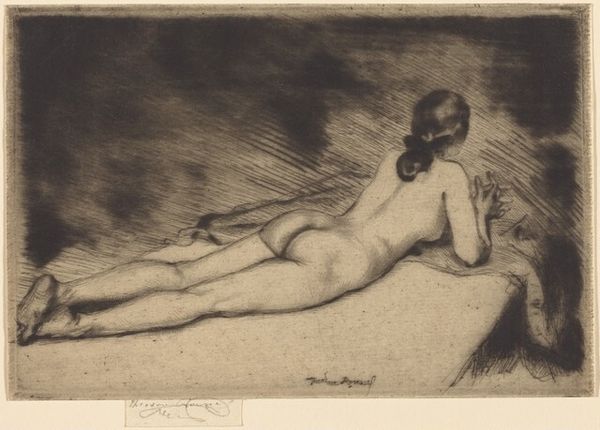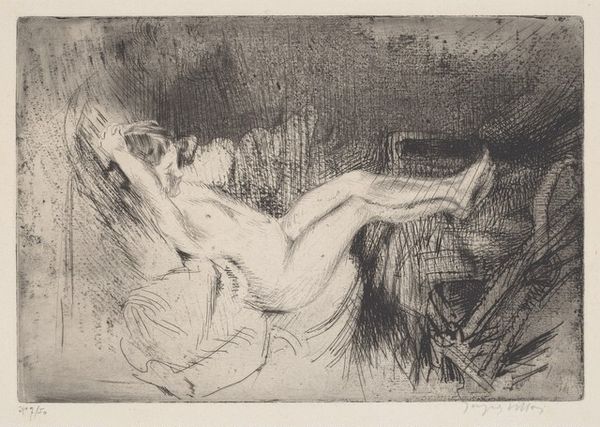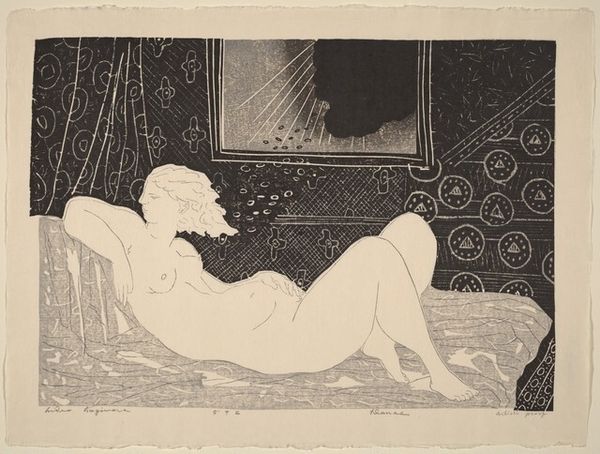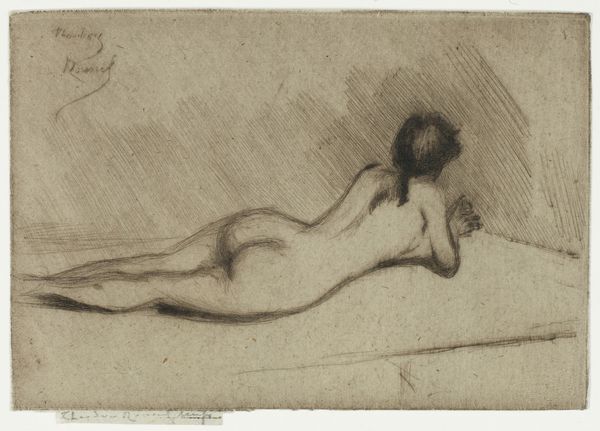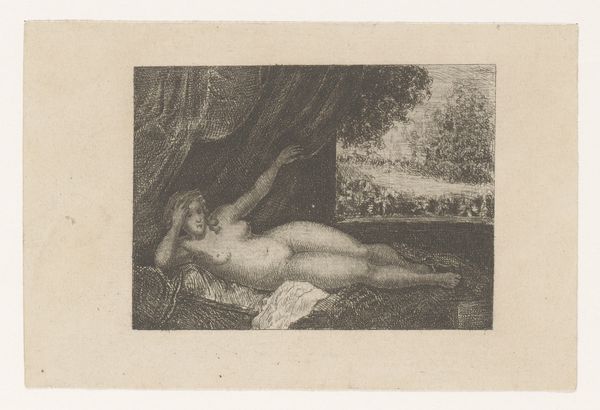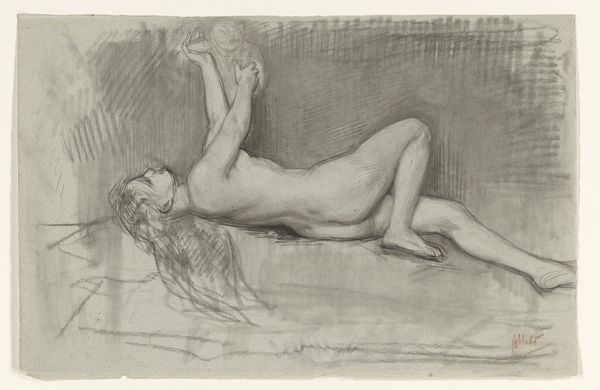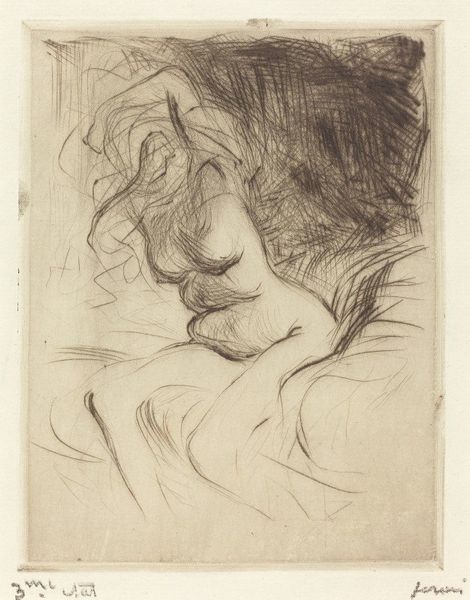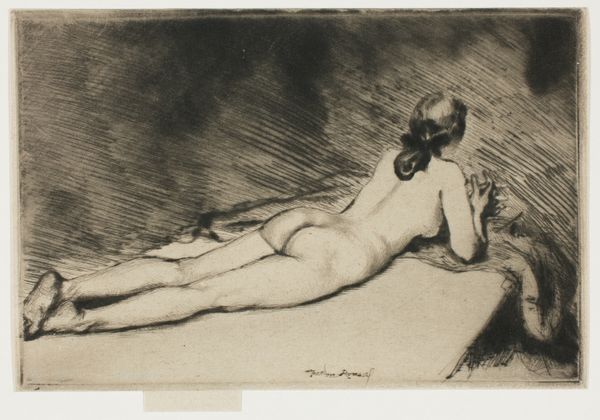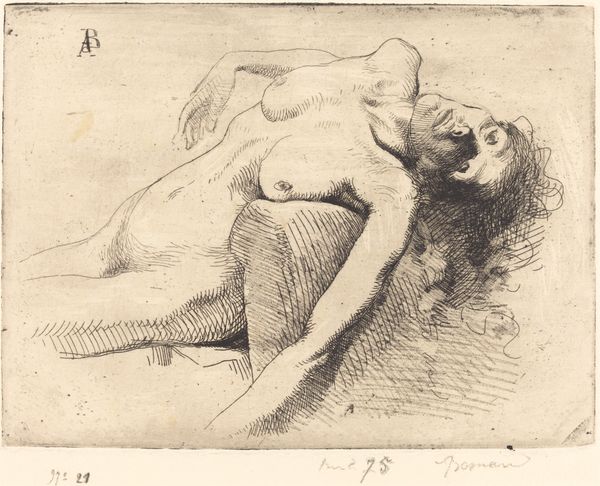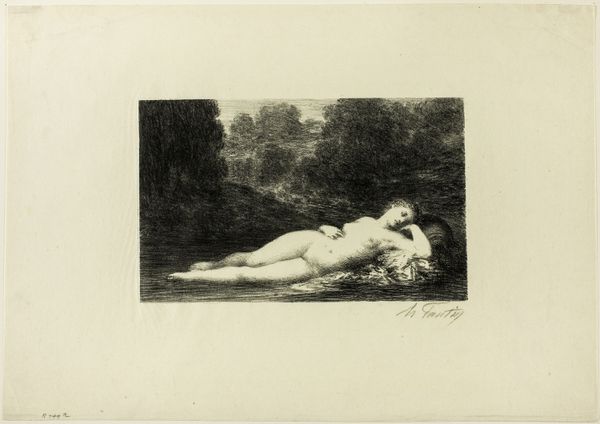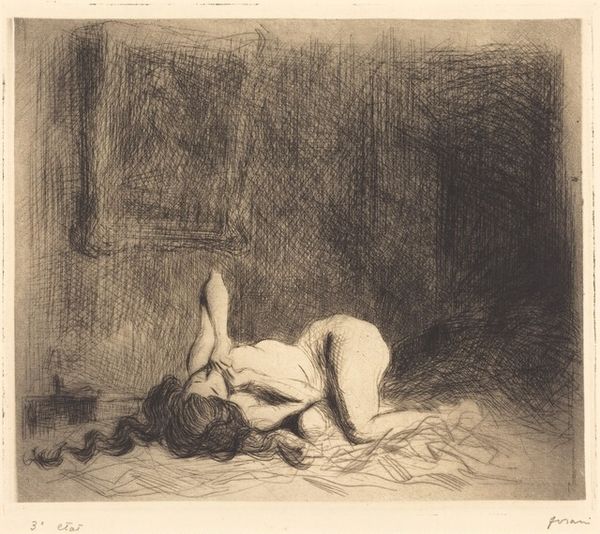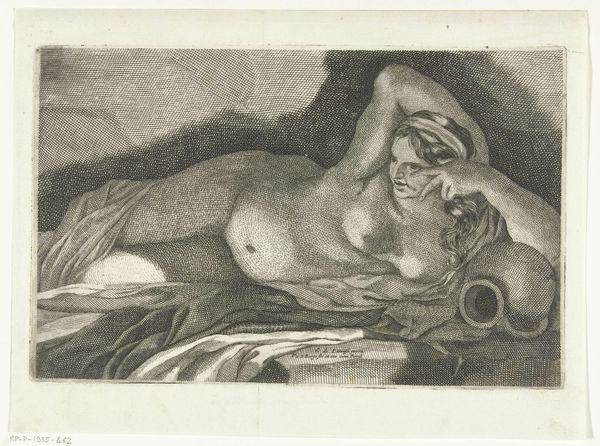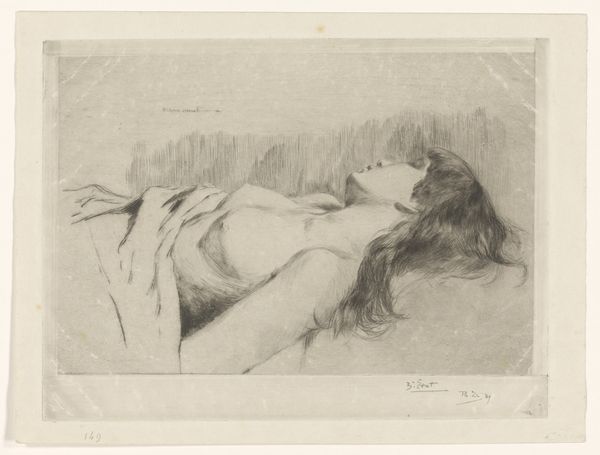
drawing, print, etching
#
drawing
# print
#
etching
#
pencil sketch
#
figuration
#
pencil drawing
#
nude
Dimensions: plate: 12.54 × 17.46 cm (4 15/16 × 6 7/8 in.) sheet: 16.03 × 20.48 cm (6 5/16 × 8 1/16 in.)
Copyright: National Gallery of Art: CC0 1.0
Curator: Here we have "Danae," an etching and print by W. Russell Flint, thought to have been made around 1930 or 1931. It’s a captivating figuration, isn't it? Editor: Absolutely. The figure, all languid pose and upward gaze, seems bathed in a shower of light. There’s a real sense of vulnerability, almost like a prayer suspended in ink. The etching process really amplifies the light and shadow play here, gives it an otherworldly feel, doesn't it? Curator: It does. The title nods to the Greek myth of Danaë, imprisoned and visited by Zeus in the form of golden rain. So, the light could be interpreted quite literally! But Flint, he wasn't always so straightforward with his nudes, was he? There's often this layer of romanticism, almost a painterly softness, despite the graphic nature of an etching. Editor: Precisely. The way the composition directs our eye is masterful, with the woman at an angle facing towards this powerful rain that symbolizes divine power or fortune and fate. There is a delicate balance of form, emphasizing her form while shrouding her in dramatic shadow, further elevating her significance to the piece. Curator: Yes, there's a sensual quality, certainly. He's using shadow like a veil, both concealing and revealing the forms. You can almost feel the coolness of the metal plate translated into the image itself. But also, what about Danae as the object of the artwork versus the female artist—what that means to both the act of looking, or interpretation? It is important for us to keep interrogating what this art might be really meaning for a diversity of views today, in a similar manner. It doesn't stay one simple, straightforward symbol forever! Editor: An excellent point—one cannot forget, no. This invites so much analysis when regarding that viewpoint—such layering to understanding "Danae". Overall, it is important to note that regardless the narrative or symbolism imbued within, we return to the technical brilliance with how the artist achieved to present what he meant to do, no? Curator: Absolutely. The skill in capturing light, form, and a narrative all within the precise medium of etching, is indeed something special. It's a quiet drama, captured in ink. Editor: Leaving us suspended somewhere between mythology, flesh, form, light, and the artistic print technique to the beauty we get to ponder now. What an encounter.
Comments
No comments
Be the first to comment and join the conversation on the ultimate creative platform.
